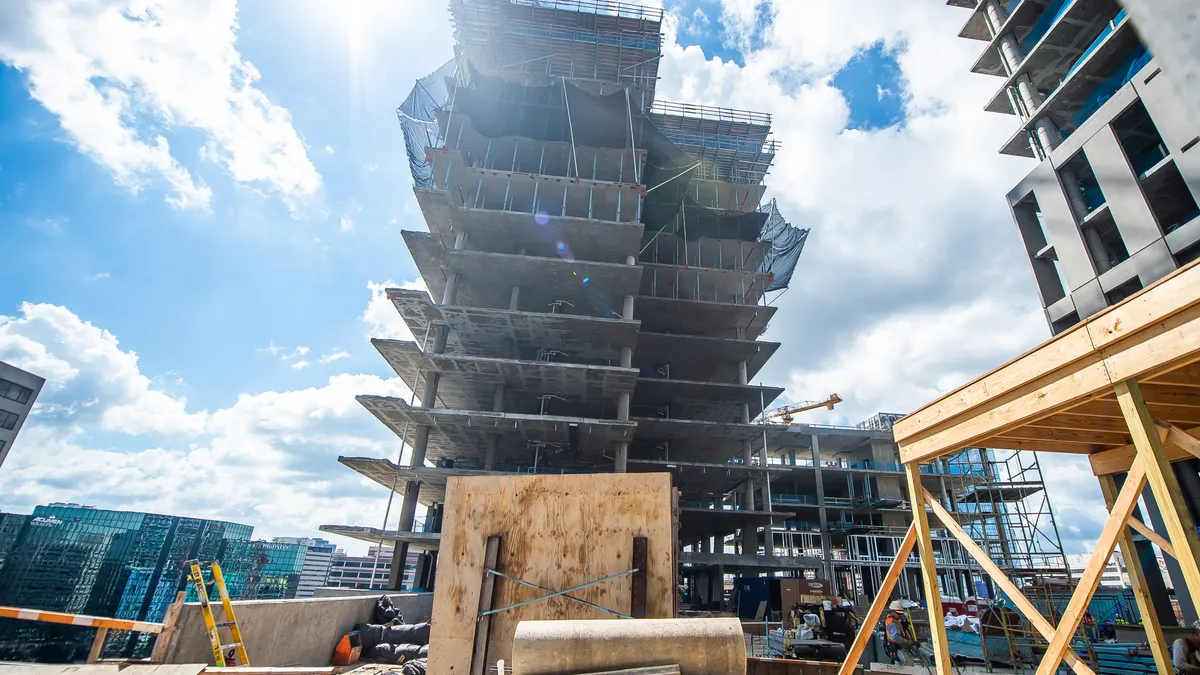Dive Brief:
- Nonresidential construction input prices declined 0.8% in November compared to the previous month, according to an Associated Builders and Contractors analysis, due in part to improvement in supply chains that were battered by the COVID-19 pandemic.
- Despite the monthly decline, nonresidential construction input prices remain 11.5% higher than a year ago, and up 40% from February 2020, according to the report.
- “While supply chains may be improving, helping to moderate the price of physical inputs, contractors will continue to face elevated and rising human capital costs,” said Anirban Basu, ABC chief economist, in the release. “This may explain why just as many contractors expect profit margins to decline over the next six months as expect them to expand.”
Dive Insight:
Contactors expect growth in both sales and employment levels over the next six months, according to ABC’s Construction Confidence Index. The input prices report will “do little to curb that optimism,” said Basu.
Overall construction input prices, which include both nonresidential and residential numbers, dropped 0.9% in November, but still remain 11.9% higher from a year ago, according to the report.
Input prices increased in just four of the 11 nonresidential subcategories on a monthly basis, according to the report. For example, prices for concrete products jumped 0.9% in November, and remained elevated 14.3% from last year. At the same time, prices for prepared asphalt, tar roofing and siding products ticked up 0.7% in November, and remained up 12.5% from last year.
On the other end of the spectrum, natural gas prices fell 15.8% in November, and decreased 26% from last year. Energy and crude petroleum prices dropped 7.8% and 2.3% respectively, compared to the previous month. Crude petroleum prices still remain 8.5% up from last year, while energy prices dropped 4.4% from 12 months ago.
“The decline in wholesale prices for many construction inputs is generally positive news,” said Basu. “In November, much of the relief emerged from lower energy prices.”















